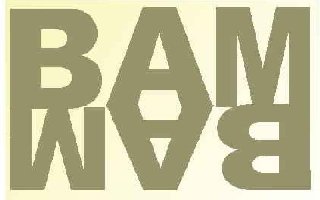 |
||
I don't plan to give an in-depth history of the music to please the curious. This is more bullet points from reggae's history that relate to what I feel is the the significance of the music and culture. There are three main types of the African music and style, particularly in the diaspora Traditional or classical - master drummer, jali's. Hardcore African. Contemporary or Diasporan - calypso, rumba, samba, salsa. African but utilises other cultural influences. Eurocentric - N. American music such as jazz, blues, r&b. Uses European structures and values and marketed for European appreciation. The history of reggae represents a uniting of these three into one form. In Jamaica in the late 1950's r&b was the commercial music. This was because of its popularity with those on the higher levels of society. Therefore it was played on the radio and in the clubs. If you wanted to make it big you had to play r&b. On the other levels of society, people were listening to more local (Caribbean) music such as mento, a form of calypso. This was the people's popular music. There were strong communities of more traditional forms such as buru, pocomania and kumina. These were very much based in African culture and as such occupied the lowest levels of society.
|
Many have said that musicians blended these forms naturally. However, I feel that the intention was much more political. At hthe turn of the the 60's the soon to be legendary , Prince Buster produced what was essentially an r&b tune but he purposely incorporated the rasta drumming of Count Ossie on the rhythm. The record, 'Oh Carolina' by the Folkes Brothers has become a seminal piece of Jamaican music. Shaggy topped the UK charts with his version in 1993. Musicians knew that they had to appeal to the commercial market by copying r&b but deliberately incorporated the more African forms of mento and Pocomania. By 1962, the year of Jamaican independence, they had established an indigenous genre called ska. Prime Minister Edward Seaga, looking to establish Jamaican independence, wanted to promote indigenous culture to the world. He used the 196*** world fair to launch ska as Jamaican music. Prior to this Jamaican society marginalised this 'local' music in favour of the more prestigious r&b. Seaga used an uptown outfit, Byron lee and the Dragonaires, to promote the music. Ska became THE music of Jamaica. Expatriate Jamaicans brought this music to England and by 1965 ska made it to no.1 in the British charts with 'My Boy Lollipop' by Millie Small. From a deliberate promotion of African culture in the face of Eurocentric dominance. Ska was launched on to the international stage as a tool of independance and a cultural statement. It then demonstrated that it is possible to conquer the might of Europe without selling out. |
| The next stage of development illustrates how the music remained connected with the people. It is said that as ska developed it became more hyped, late ska is definitely faster than early ska. The crowds reaction was to slow the music down. The musicians responded, not with a slow ska, but with a whole new rhythm. More raw than before with a very firm guitar riff and a more laid back bass line. The new music was called Rocksteady. Rocksteady very quickly mutated into reggae in 1968. A few have claimed to have originated reggae but no one can be certain. The name itself is said to relate to the sex act. The development of reggae followed the path laid in its origin. The music and the culture continued to be driven from the lower levels of society where it is steeped in African values. It rose from these levels, in an oppressed society, on one of the worlds smaller islands to change the face of popular culture around the world. Since the birth of reggae we have seen it grow and change. On the commercial front the reggae of the late 60's and early 70's was popularised by the rude bwoy as represented in the film 'The Harder They Come' starring Jimmy Cliff. By the mid 70's the rocker had replaced the rudie and dub had taken over (check the film 'Rockers'). With heroes like King Tubby and Lee Perry producers really came into their own as artists, exploiting new technology to push the boundaries of creating rhythm.
|
By the mid eighties the ragamuffin was on the rise and once again technology brought about a change. With the sleng teng rhythm of Bobby Digital came the official launch of dancehall. I would argue that a dancehall scene has always been around, but the mid 80's saw it formally titled. The mid 90's saw the introduction of the bashment scene and women really came into their own. The new hero was the bashment gyal and the dancefloor heated up once more. Today the dancefloor really has gone crazy and we are due for another change. Watch this space. Alongside the commercial scene we have always had the roots scene with heroes like Burning Spear, Bob Marley, Culture, Marcia Grifiths and Rita Marley. In Britain there has also been the Lovers scene. Softer, more Europeanised, easy-listening reggae which was big in the 80's and is always threatening to come back. |